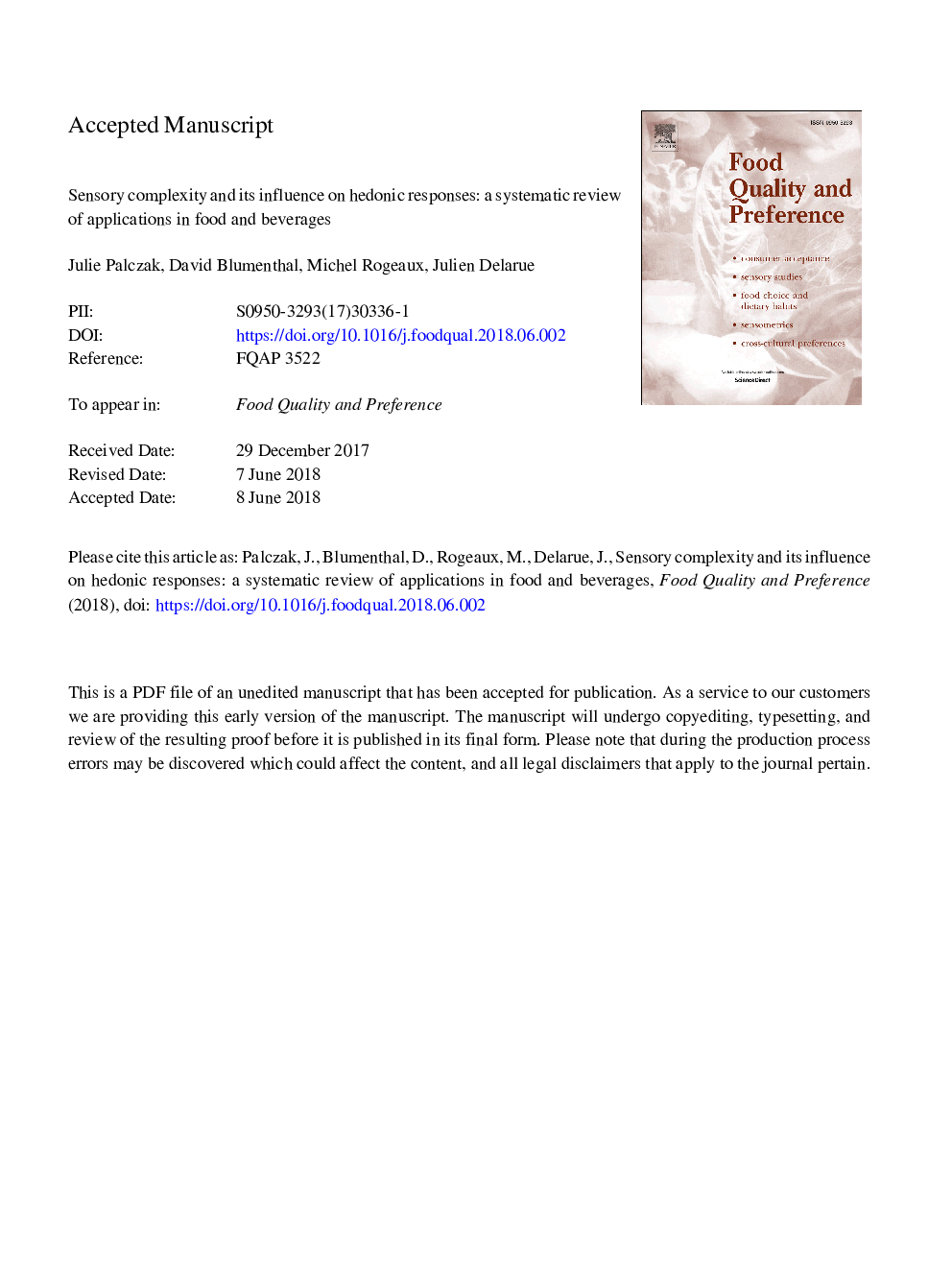| Article ID | Journal | Published Year | Pages | File Type |
|---|---|---|---|---|
| 8838352 | Food Quality and Preference | 2019 | 29 Pages |
Abstract
This article reviews the scientific literature on complexity in the field of food and beverages. A literature search was carried out on online catalogues using the search terms 'complexity' and 'preference' or 'hedonic' or 'liking'. Fifty five relevant articles have been selected and analysed for the ways authors define, manage and measure complexity. Fourteen of these articles addressed the link between complexity and hedonic response. One major result is that there is no consensus regarding the definition of complexity. In addition to physical complexity of products, definitions of perceived complexity can be divided into three categories: sensory, cognitive and emotional. A direct consequence of the diversity of the definitions is that there are many different ways to measure complexity, including sensory or instrumental methods. In order to generate different levels of complexity, authors play with the number of food components (ingredients, chunks, flavour notes). Besides, complexity is always studied for one sensory modality only (e.g. either aspect or texture or smell or taste). Overall, very little attention is paid to the temporal dimension of sensory complexity. Eventually, only one paper out of 14 found an inverted U-curve relationship between complexity and hedonic response as suggested by Berlyne's theory.
Related Topics
Life Sciences
Agricultural and Biological Sciences
Food Science
Authors
Julie Palczak, David Blumenthal, Michel Rogeaux, Julien Delarue,
